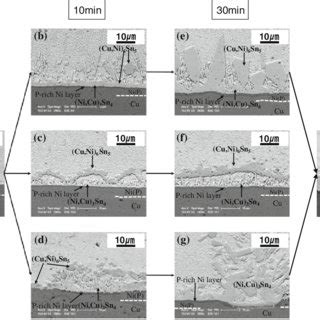What is ENEPIG?
ENEPIG is a PCB surface finish that consists of three layers: electroless nickel, electroless palladium, and immersion gold. The process involves depositing a thin layer of electroless nickel onto the copper pads, followed by a thin layer of electroless palladium, and finally, a layer of immersion gold. The palladium layer acts as a barrier, preventing the formation of nickel-gold intermetallic compounds, which can lead to brittleness and reduced solder joint reliability.
Advantages of ENEPIG
- Excellent solderability
- Improved solder joint reliability
- Compatibility with a wide range of assembly processes
- Enhanced wire bonding performance
- Extended shelf life
Disadvantages of ENEPIG
- Higher cost compared to ENIG
- More complex manufacturing process
- Potential for palladium corrosion in harsh environments
What is ENIG?
ENIG is a simpler PCB surface finish that consists of two layers: electroless nickel and immersion gold. The process involves depositing a layer of electroless nickel onto the copper pads, followed by a layer of immersion gold. The gold layer provides excellent solderability and protects the nickel from oxidation, ensuring a longer shelf life for the PCB.
Advantages of ENIG
- Lower cost compared to ENEPIG
- Simpler manufacturing process
- Good solderability
- Compatibility with most assembly processes
- Longer shelf life compared to bare copper
Disadvantages of ENIG
- Potential for brittle solder joints due to nickel-gold intermetallic compounds
- Limited wire bonding performance
- Susceptibility to black pad syndrome
ENEPIG vs ENIG: Performance Comparison
To better understand the differences between ENEPIG and ENIG, let’s compare their performance in various aspects:
| Aspect | ENEPIG | ENIG |
|---|---|---|
| Solderability | Excellent | Good |
| Solder Joint Reliability | High, due to the palladium barrier layer | Moderate, potential for brittle intermetallic compounds |
| Wire Bonding | Excellent, suitable for advanced packaging | Limited performance |
| Shelf Life | Extended, due to the protection provided by the gold layer | Good, but shorter than ENEPIG |
| Cost | Higher, due to the additional palladium layer | Lower, simpler manufacturing process |

Choosing Between ENEPIG and ENIG
When deciding between ENEPIG and ENIG, consider the following factors:
- Application requirements: Evaluate the specific needs of your application, such as solderability, wire bonding, and reliability.
- Cost constraints: Determine your budget and consider the cost difference between ENEPIG and ENIG.
- Manufacturing capabilities: Assess your manufacturing process and ensure that it can accommodate the chosen surface finish.
- Environmental factors: Consider the operating environment of your PCB and choose a finish that can withstand the expected conditions.
Frequently Asked Questions (FAQ)
1. Is ENEPIG always better than ENIG?
Not necessarily. While ENEPIG offers superior performance in many aspects, ENIG may be a more cost-effective solution for applications that do not require advanced packaging or extreme reliability.
2. Can ENEPIG be used for all PCB applications?
ENEPIG is suitable for most PCB applications, but it may not be necessary for simple designs or low-cost projects. It is best suited for applications that require high reliability, advanced packaging, or extended shelf life.
3. How does the cost of ENEPIG compare to other surface finishes?
ENEPIG is generally more expensive than ENIG and other simple surface finishes like OSP (Organic Solderability Preservative) due to the additional palladium layer and more complex manufacturing process. However, it is still more cost-effective than gold-based finishes like ENAG (Electroless Nickel Autocatalytic Gold).
4. Can ENIG be used for wire bonding?
While ENIG can be used for wire bonding, its performance is limited compared to ENEPIG. The palladium layer in ENEPIG provides a better surface for wire bonding, resulting in stronger and more reliable bonds.
5. How does the shelf life of ENEPIG compare to ENIG?
ENEPIG offers an extended shelf life compared to ENIG due to the additional protection provided by the palladium and gold layers. This makes ENEPIG a better choice for applications that require long storage periods or exposure to harsh environments.
Conclusion
Choosing between ENEPIG and ENIG ultimately depends on your specific application requirements, cost constraints, and manufacturing capabilities. ENEPIG offers superior performance in terms of solderability, reliability, and wire bonding, making it an excellent choice for advanced packaging and high-reliability applications. However, ENIG remains a cost-effective solution for simpler designs and less demanding environments.
By understanding the key differences between ENEPIG and ENIG, you can make an informed decision and select the surface finish that best meets your needs. Always consult with your PCB manufacturer to ensure that your chosen surface finish is compatible with your design and manufacturing process.

No responses yet